13 February 2024
Road Scholar’s Southern Africa Birding Safari was wonderful on so many levels.
Before the trip began, I expected to see many Life Birds. The southern region from the Zambezi River to the Cape has more breeding species than the US and Canada combined. Add to that the winter migrants from Europe and Asia and there were so many birds to see every day. In 13 days of birding I saw or heard 233 species, 207 of which were Life Birds. See the details in my eBird Trip Report here.
My favorite birds were hard to whittle down, chosen for a variety of reasons. Some because I had a pent up desire to see them. Some for their beauty. Some for their behavior. 14 are in the slideshow (thanks to Wikimedia photos) and described below.
No. 1! The secretarybird (Sagittarius serpentarius) is declining and endangered so it was a real treat to see one. These elegant raptors walk slowly scanning the ground for food while their long scaly legs protect them from the venomous snakes they eat for a living. [If the video below spins without playing, click on the YouTube logo at bottom right to watch it on YouTube.]
No. 2: I’ve been wanting to see a Kori bustard ever since I wrote about them in 2009.
No. 3 & 4: Flamingos! We saw greater (Phoenicopterus roseus) and lesser (Phoeniconaias minor) flamingos at Marievale. Greater flamingos have pink beaks, lessers have dark beaks.
No. 5: The black heron (Egretta ardesiaca) looks like a snowy egret in charcoal black. He throws shade to catch his prey.
No. 6: I wanted to see an Amur falcon (Falco amurensis) after I learned about their amazing migration last October.
No. 7: I’ve always liked the French name of the bateleur (Terathopius ecaudatus), an endangered serpent eagle that “tumbles” in aerial acrobatics. In flight bateleurs are easy to identify because their toes stick out beyond their short tails.
No 8: We found a dark chanting goshawk (Melierax metabates) holding a lizard above us that he had caught for lunch. Here’s how he chants.
No. 9: Southern carmine bee eater (Merops nubicoides): Beautiful and acrobatic.
No. 10: Crimson-breasted shrike (Laniarius atrococcineus): Gorgeous in red. (eBird calls it a gonolek. Such confusion!)
No. 11: African paradise flycatcher (Terpsiphone viridis): Colorful and extravagant.
No. 12: The wire-tailed swallows (Hirundo smithii) were an unexpected joy. As we boated up and down the Chobe River the swallows flew around the boat. Sometimes they flew with us, just under the tarp roof, or landed on the edge.
No. 13: Red-billed oxpeckers (Buphagus erythrorhynchus) were easily found on mammals, especially impalas. We saw quite a few perched upside down on a giraffe, plus a pair nesting at Hwange National Park.
No. 14: Male pin-tailed whydahs (Vidua macroura) are boring brown in the non-breeding season but during southern Africa’s summer they are snazzy with long thin tail feathers. At Marievale a male called just outside the bird hide window, then displayed in front of us when a female showed up. Such a show off!
I’ll be telling you more about our trip in the weeks ahead: birds, animals, landscape, people, culture, history, and weather.
Though we did not see a leopard we saw the “leopard of birds.” Stay tuned.
(photos from Wikimedia Commons)
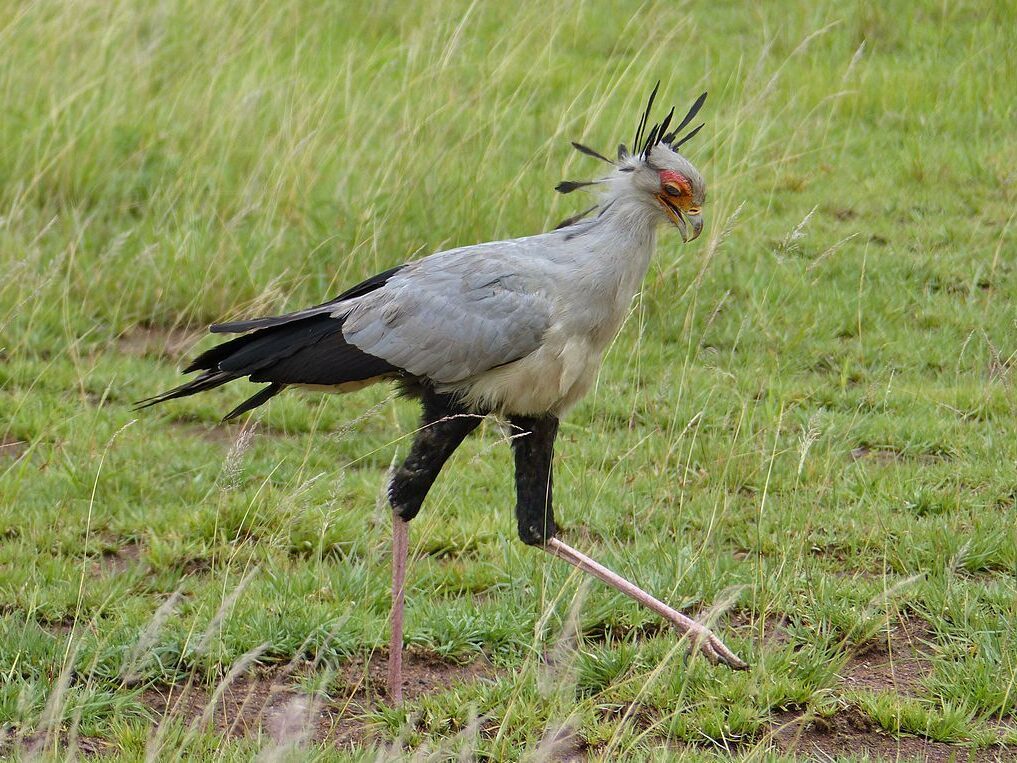
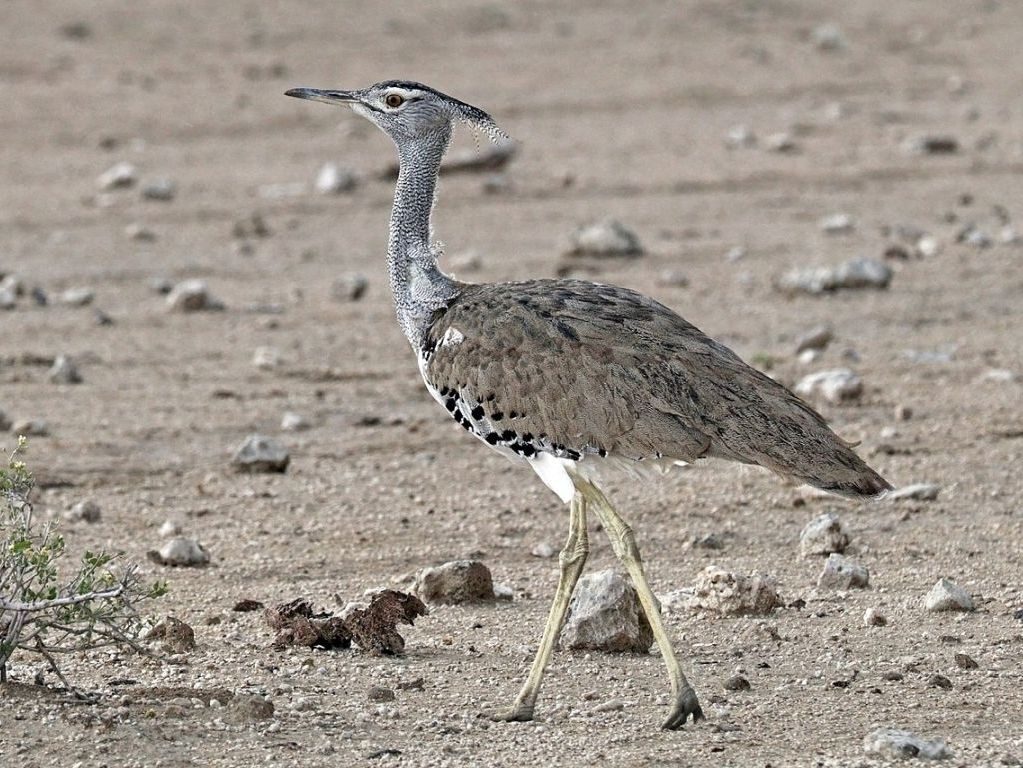
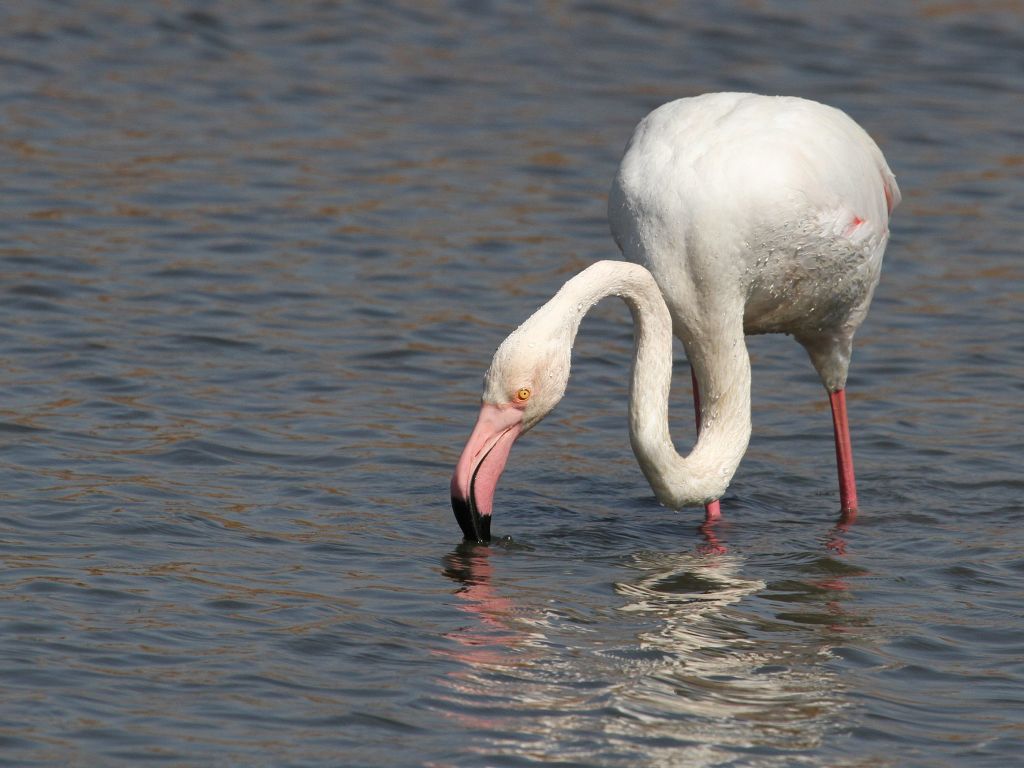
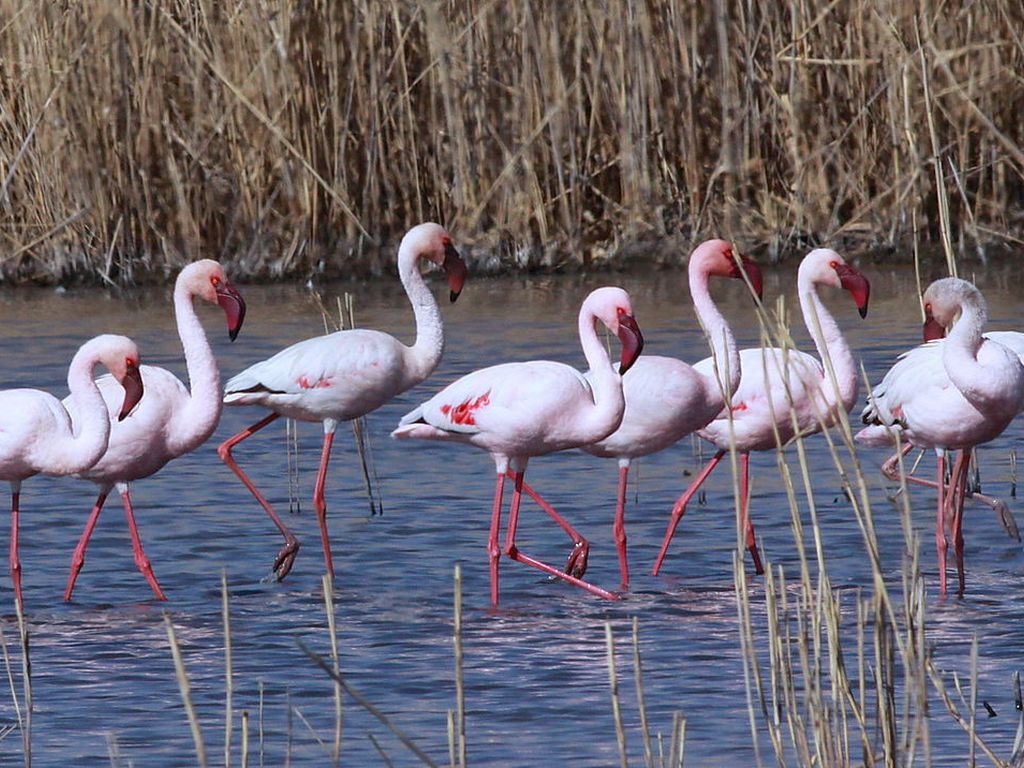
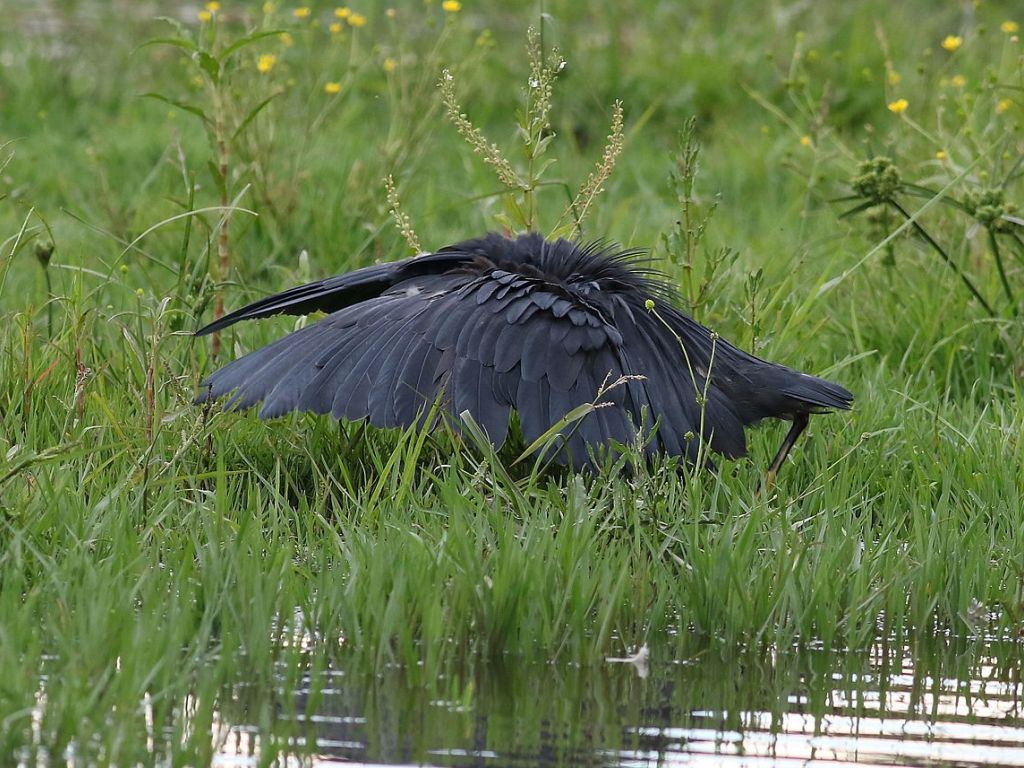
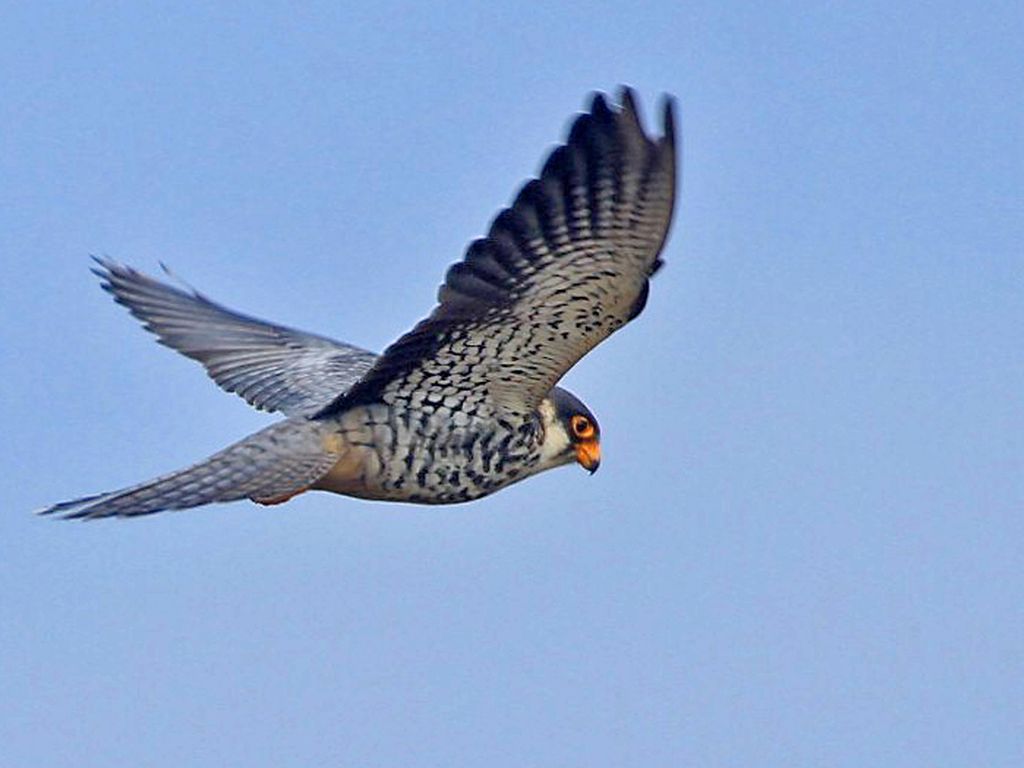
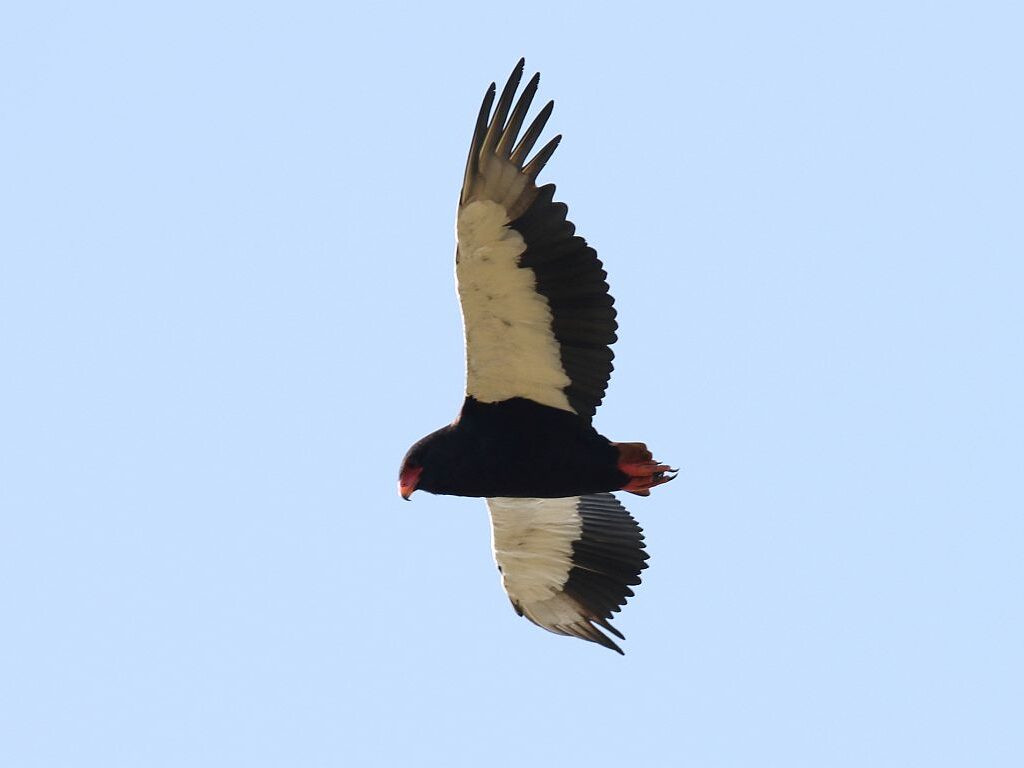
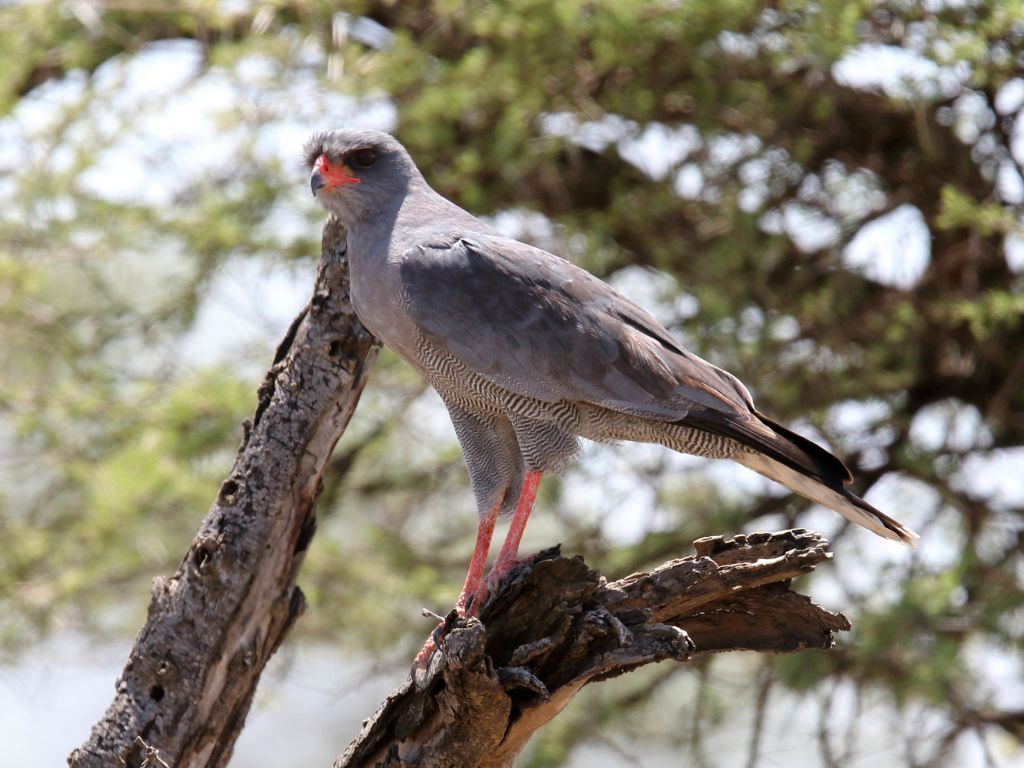
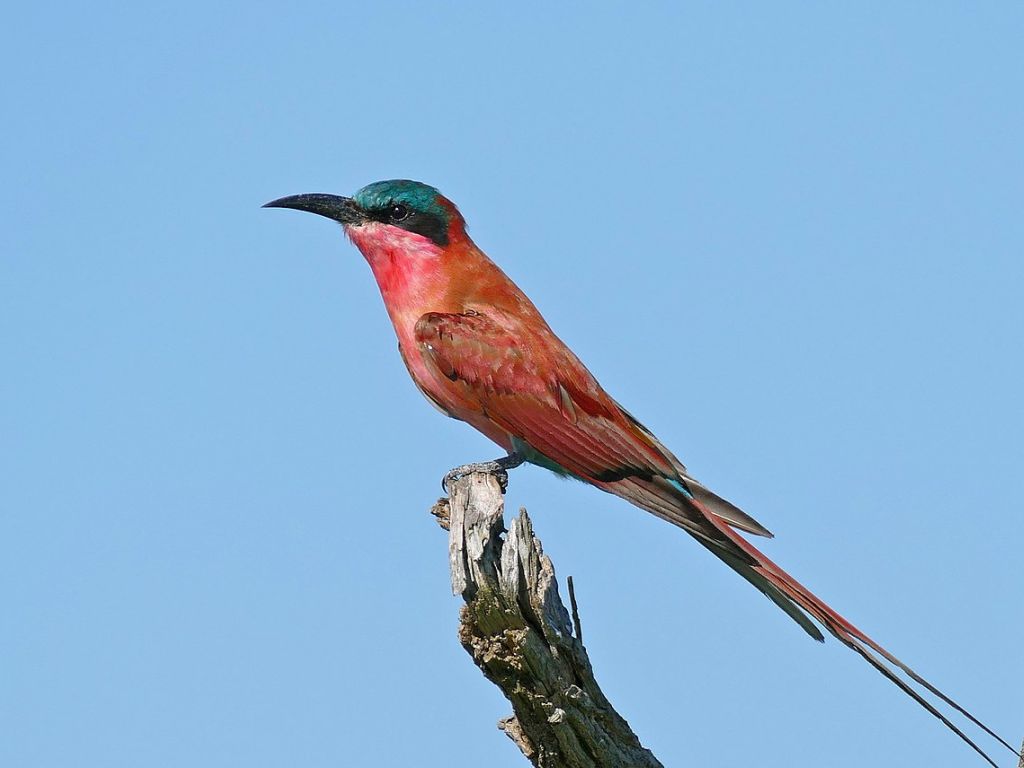
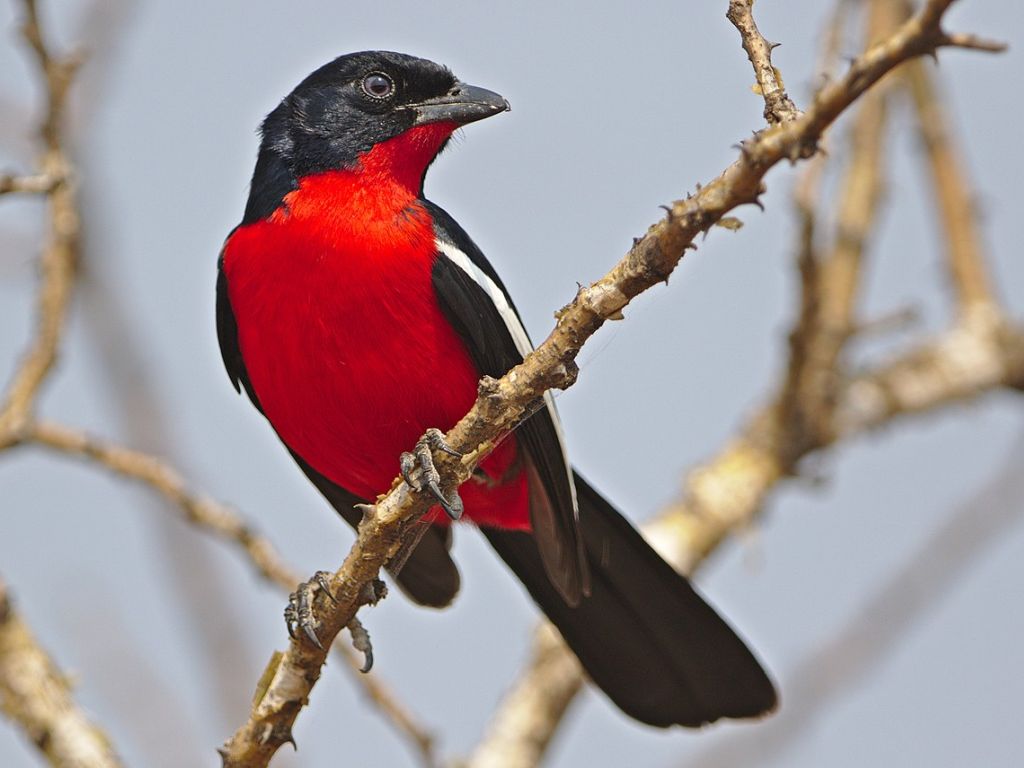
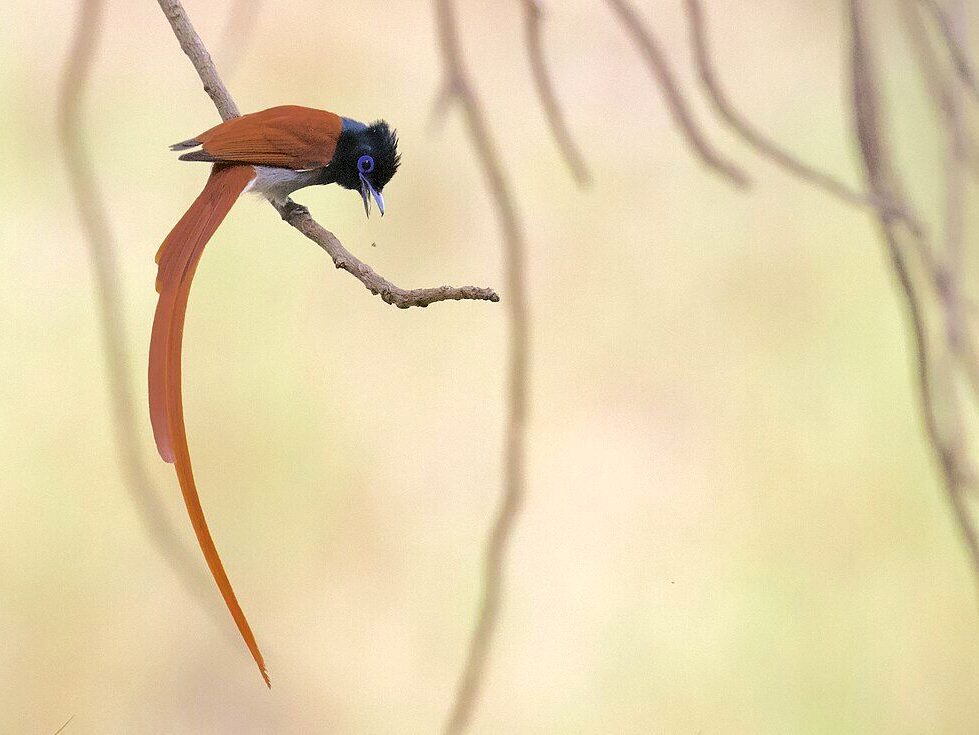
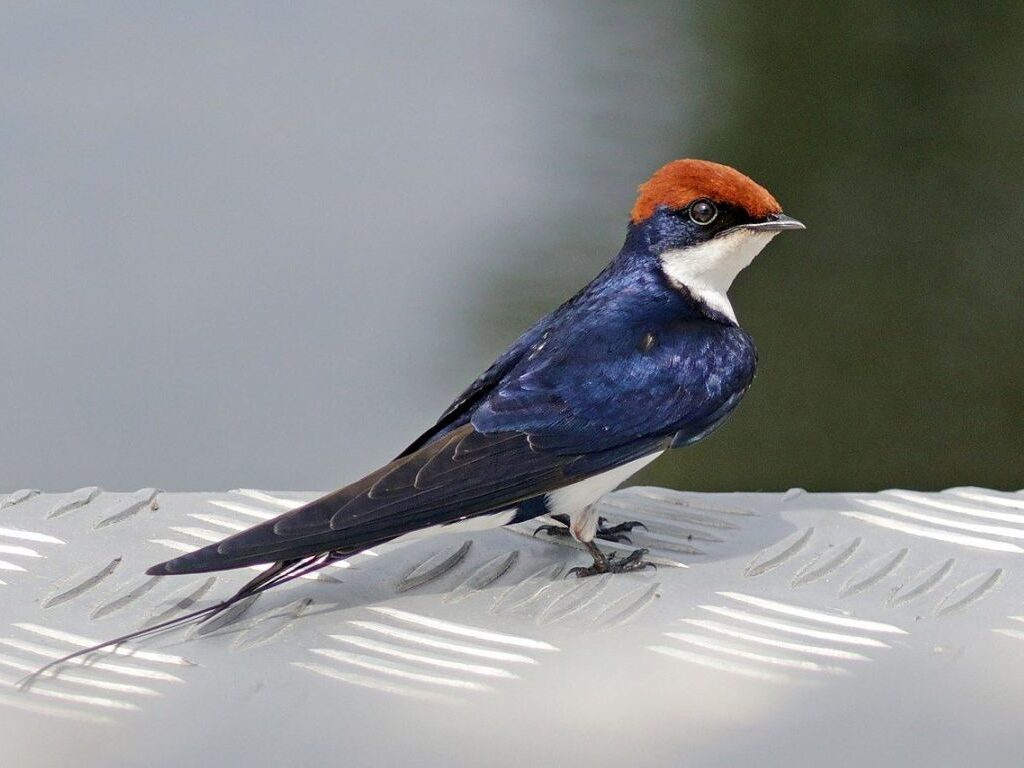
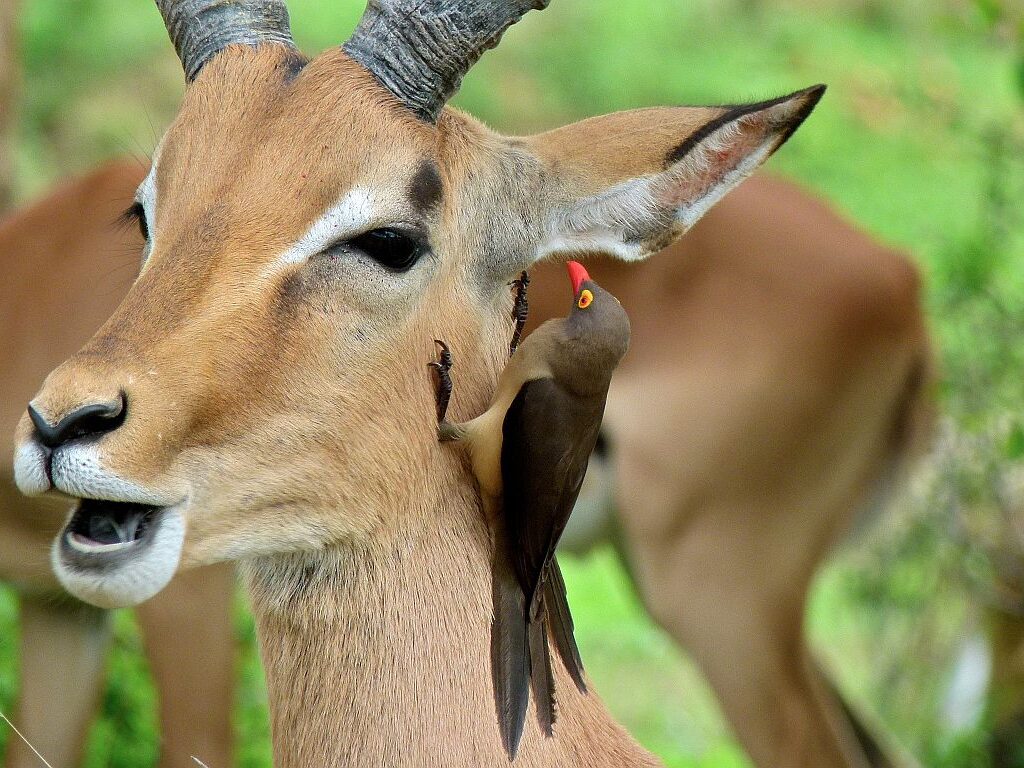
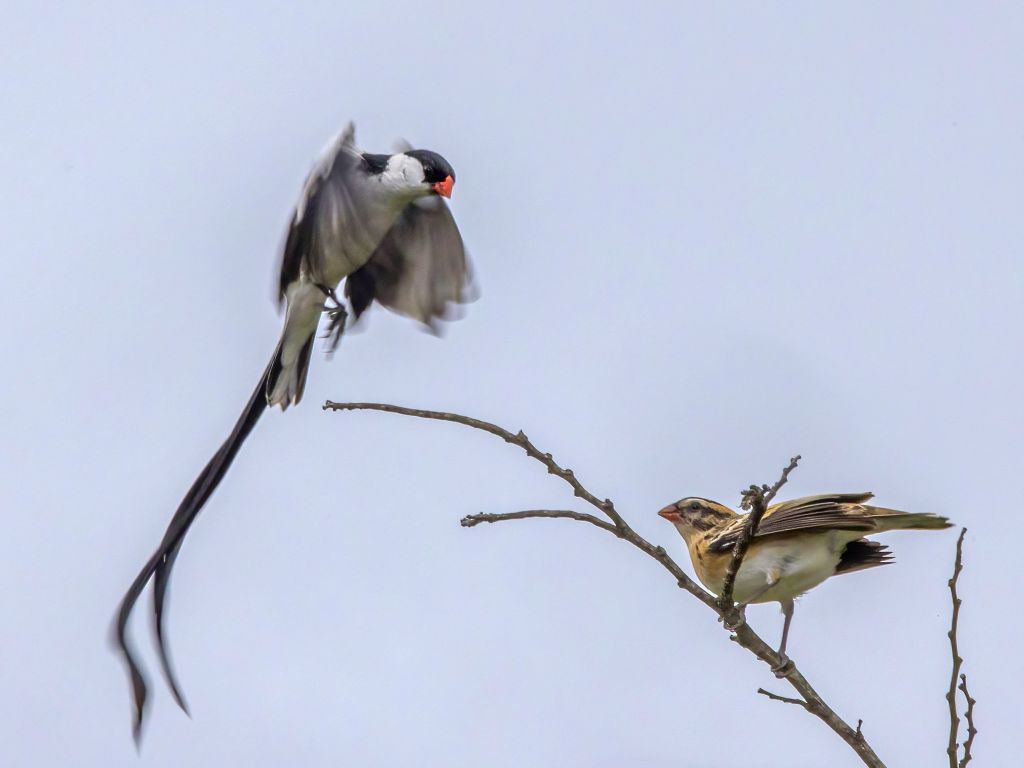
This was a wonderful post Kate. Looking forward to learning more in your future posts about the trip!